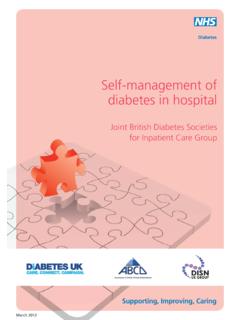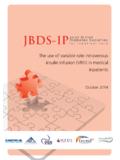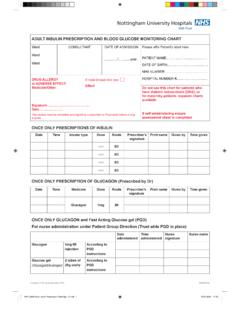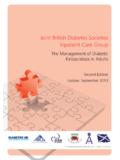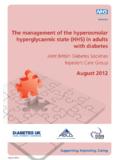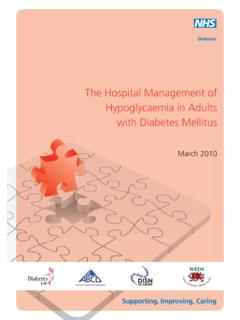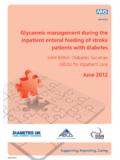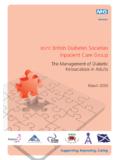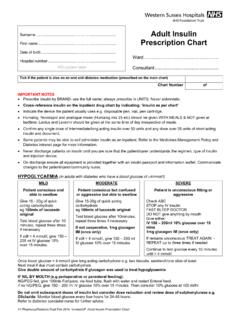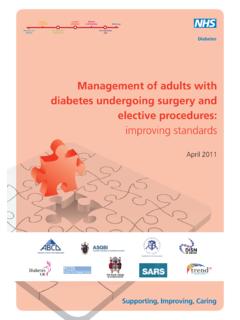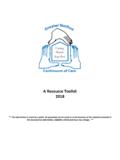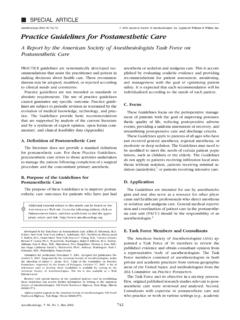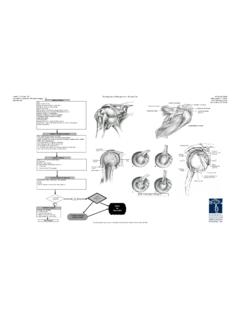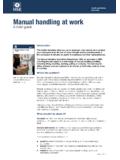Transcription of Management of Hyperglycaemia and Steroid …
1 Management of Hyperglycaemia andSteroid (Glucocorticoid) TherapyOctober 2014 This document is coded JBDS 08 in the series of JBDS documentsOther JBDS documents:Admissions avoidance and diabetes: guidance for clinical commissioning groups and clinical team;December 2013, JBDS 07 The Management of the hyperosmolar hyperglycaemic state (HHS) in adults with diabetes; August2012, JBDS 06 Glycaemic Management during the inpatient enteral feeding of stroke patients with diabetes; June2012, JBDS 05 Self- Management of diabetes in hospital; March 2012, JBDS 04 Management of adults with diabetes undergoing surgery and elective procedures: improvingstandards; April 2011, JBDS 03 The Management of Diabetic Ketoacidosis in Adults; revised September 2013, JBDS 02 The hospital Management of hypoglycaemia in adults with diabetes mellitus.
2 Revised September2013, JBDS 01 These documents are available to download from: ABCD website: UK website: and acknowledgments5-6 Introduction7 Steroids - mechanism of action8 Steroid therapy impact on blood glucose9 Glucose targets10 Glucose monitoring11 Diabetes treatment options 12-13 Treatment of Steroid induced hyperglycaemia14-15 Hospital discharge16-17 Steroid treatment in pregnancy18 Steroid treatment in end of life19 Audit standards20 Controversial areas21 References22 Appendix 1 Algorithm to show treatment of Steroid 23induced diabetesAppendix 2 Algorithm to show Management of patients 24with diabetes on once daily steroidsAppendix 3 End of life Steroid
3 Management25 Appendix 4 Patient letter Glucose monitoring and 26steroid useContentsThis is the latest in the series of Joint British Diabetes Societies for Inpatient Care (JBDS-IP) guidelines , andfocuses on Steroid induced Hyperglycaemia and Steroid induced diabetes. They are evidence based wherepossible but are also drawn from accumulated professional knowledge and consensus agreement. The useof steroids in patients with established diabetes is a common clinical problem, with no generally acceptedmanagement strategy. Steroid induced diabetes may be frequently undiagnosed and only discovered onthe emergence of symptoms or complications of acute Hyperglycaemia .
4 This guideline constructs a framework for the recognition and Management of Steroid inducedhyperglycaemia and Steroid induced diabetes, and is designed for use by general physicians. Necessarily,the guideline includes recommendations for the Management of patients when they leave hospital andthus, this guidance may also be utilised for those treated with steroids in the outpatient department or inGeneral Practice. As with all of the JBDS-IP documents, this document is dynamic and will be reviewed in response to feedbackwith a view to incorporating emerging evidence. This document has been produced by the Joint BritishDiabetes Societies for Inpatient Care on behalf of Diabetes UK, the Association of British Clinical Diabetologists(ABCD), the Diabetes Inpatient Specialist Nurse (DISN) UK Group and Training Research and Education forNurses in Diabetes (TREND-UK), in collaboration with the Primary Care Diabetes Society (PCDS).
5 Dr Aled RobertsJune JamesDr Ketan Dhatariya4 ForewordLead authorshipDr Aled Roberts, Cardiff and Vale University Health Board June James, University Hospitals of Leicester NHS TrustDr Ketan Dhatariya, Norfolk and Norwich University Hospitals NHS Foundation TrustSupporting organisationsAssociation of British Clinical Diabetologists (ABCD)Chair: Dr Rob Gregory (Leicester)Diabetes Inpatient Specialist Nurse (DISN) UK GroupChair: Esther Walden (Norwich)Diabetes UK: Tracy Kelly, Head of CareJoint British Diabetes Societies (JBDS) Inpatient Care GroupChair: Professor Mike Sampson (Norwich)Endorsed byDiabetes FrailPrimary Care Diabetes Society (PCDS)Royal College of Nursing (RCN)Training, Research and Education for Nurses in Diabetes (TREND-UK)United Kingdom Clinical Pharmacy Association (UKCPA)
6 Diabetes and Endocrinology CommitteeWriting and review groupDr Neera Agarwal, Cardiff and Vale University Health BoardJulie Brake, Royal Liverpool and Broadgreen University Hospitals NHS TrustCaroline Brooks, Maidstone and Tunbridge Wells NHS TrustErwin Castro, East Sussex Hospitals NHS TrustDr Rob Gregory, University Hospitals of Leicester NHS TrustDr Claire Higham, Christie Hospital NHS TrustLouise Hobley, Central Manchester University Hospitals NHS Foundation TrustDr Andrew Macklin, West Dorset General Hospitals NHS TrustDr Warren Roderick, Royal Devon and Exeter NHS Foundation TrustFiona Smith, Royal College of NursingGrace Vanterpool, Hammersmith Hospitals NHS TrustDr Peter Winocour, East and North Hertfordshire NHS Trust5 AcknowledgementsThe authors would like to thank Shehnaz Jamal, University Hospitals of Leicester NHS Trust for all her help withthis IP GroupDr Belinda Allan, Hull and East Yorkshire Hospital NHS TrustDr Hamish Courtney, Belfast Health and Social Care Trust, Northern IrelandDr Ketan Dhatariya, Norfolk and Norwich University Hospitals NHS Foundation TrustDr Daniel Flanagan.
7 Plymouth Hospitals NHS TrustDr Stella George, East and North Hertfordshire NHS TrustDr Rob Gregory, University Hospitals of Leicester NHS TrustJune James, University Hospitals of Leicester NHS TrustTracy Kelly, Diabetes UKDr Rif Malik, King s College Hospital NHS Foundation TrustDr Colin Perry, NHS Greater Glasgow and ClydeDr Gerry Rayman, The Ipswich Hospitals NHS TrustDr Stuart Ritchie, NHS LothianDr Aled Roberts, Cardiff and Vale University Health BoardProfessor Mike Sampson (Norwich), Joint British Diabetes Societies (JBDS) Inpatient Care Group ChairDr Maggie Sinclair-Hammersley, Oxford University Hospitals NHS TrustDebbie Stanisstreet, East and North Hertfordshire NHS TrustProfessor Jonathan Valabhji, National Clinical Director for Obesity and DiabetesEsther Walden, Norfolk and Norwich University Hospital NHS Foundation TrustDr Peter Winocour.
8 East and North Hertfordshire NHS TrustWith special thanks to Christine Jones for her administrative work and help with these guidelines and withJBDS IP6 This document aims to guide the Management ofhyperglycaemia in people given steroids as ahospital inpatient, and following discharge. Theprevalence of Steroid use in hospital inpatients maybe in excess of 10% (Swafe et al 2014), in thecontext of an up to 30% prevalence of diabetes inhospital inpatients, with a mean diabetesprevalence of 16% (NaDIA 2012). In theoutpatient population, 40% of Steroid use is forrespiratory disease, with most of the rest beingused in musculoskeletal and cutaneous diseases,and conditions requiring Steroid use is for less than 5 days, but 22% isfor greater than 6 months and for longerthan 5 years (Fardet et al 2011).
9 The use of Steroid treatment in people with pre-existing diabetes will undoubtedly result inworsening glucose control; this may be termedsteroid induced Hyperglycaemia . This willwarrant temporary additional and more activeglycaemic Management . A rise in glucose, relatedto Steroid therapy occurring in people without aknown diagnosis of diabetes is termed steroidinduced diabetes. This may or may not resolvewhen the steroids are withdrawn. Steroid treatment may be administered as a singlehigh dose for a defined period and titrated downslowly. Steroid treatment can also be used as amaintenance therapy for a prolonged period, andmay be given in high dose when a malignanttumour is identified or at the end of life.
10 This canbe administered orally or intravenously. Themanagement of adrenal suppression due to long-term Steroid use is beyond the remit of thisdocument and advice on how to manage thiscondition should be sought from local endocrineservices. There is little evidence to guide how patients withhyperglycaemia related to Steroid use should bemanaged. Short courses of steroids resulting inminimal periods of Hyperglycaemia may notwarrant intervention. Higher dose steroids forlonger periods may result in significantsymptomatic Hyperglycaemia including fatigue,polyuria and polydipsia with the potential for acutecomplications related to Hyperglycaemia (DonihiAC et al 2006).
